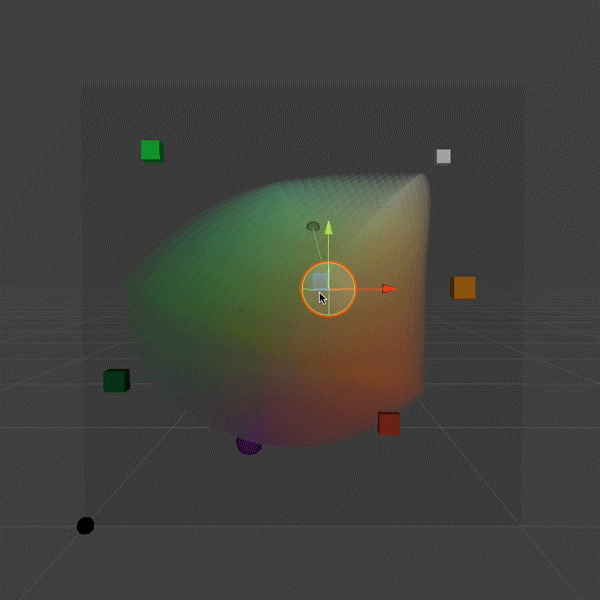Still exploring big wet pixels (originally inspired by the #genuary4 prompt) using my watercolor simulation in Unity. Now the pixels are actually pixels: given a random selection of pigments and paper, they try their best to match the color coming in through my webcam. Lovely glitches ensue.
To get this working, I had to go back and solve an old problem that’s bothered me for decades: given an arbitrary set of three pigments and paper, what combination of pigment densities will produce the closest match for any given RGB color? This is non-trivial, because the gamut described by three Kubelka-Munk pigments is non-linear, not necessarily convex, and might even not be an embedding! In our 1997 paper we addressed that problem in a really crude way, which I was never very happy with: quantize the pigment densities into bins, and find the nearest bin in RGB space using a 3d-tree search. So it gave me great satisfaction last weekend when I implemented a continuous solution, using gradient descent.

The curved RGB color gamut described by a trio of semi-opaque white, amber and green pigments on purple paper. The white sphere represents the RGB color we’d like to match. A smaller, colored sphere represents the closest approximation that can be produced within the color gamut. A thin, meandering line shows the path taken from the middle of the gamut via gradient descent.
